Where to plant lavender in your summer cottage?
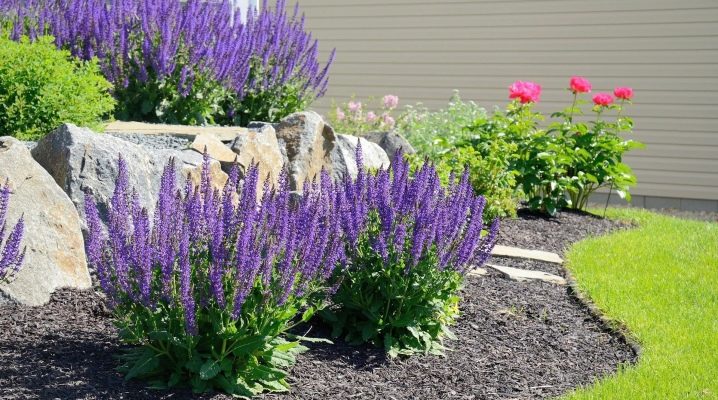
Lavender is a very delicate and beautiful plant that has recently gained great popularity among gardeners. Lavender feels best in the southern territories, but many lovers of decorating their sites with flowers try to grow it in more difficult conditions. But in any case, you first need to decide where to plant lavender in your summer cottage.
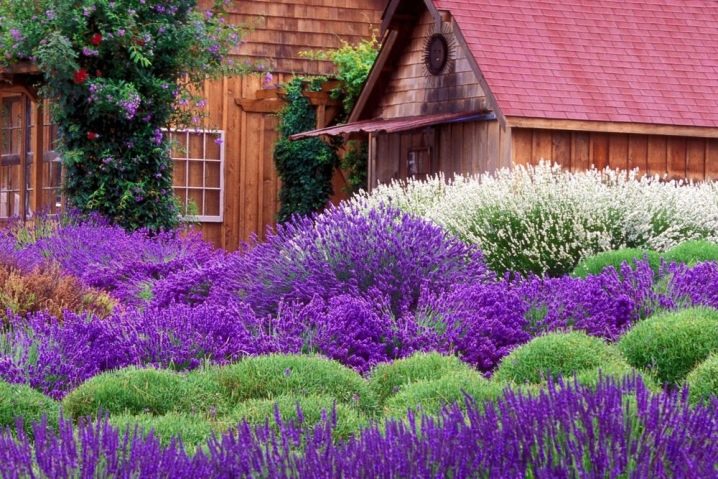
How to choose a sunny area?
It is possible for absolutely everyone to grow lavender in their summer cottage, but only this plant should be planted in the sun. Lavender loves to grow in areas that are open to light. There she feels most comfortable, more active and blooms for a long time, and is not subject to various diseases.
In nature, lavender grows under the scorching sun on depleted soils of rocky slopes. Therefore, in the garden, it will be right to create just such conditions for her.
Choose a sunny area that is not shaded by other objects for most of the day as the sun moves throughout the day. If the site is uneven, and there are hills, then it is on them that the plant will feel comfortable. The south or southwest side is ideal. It's good if there are stones nearby. Do not place more than three bushes on one square meter. At the same time, you should always take care that the lavender does not overgrow with weeds, they will not only create an unkempt look, but also take away nutrients from the lavender. However, she does not need special feeding, as well as protection from pests.
Just once in the spring, to support the plant, you can feed it with nitrogen fertilizers, and spray it against diseases and pests for preventive purposes, when the entire garden is treated.
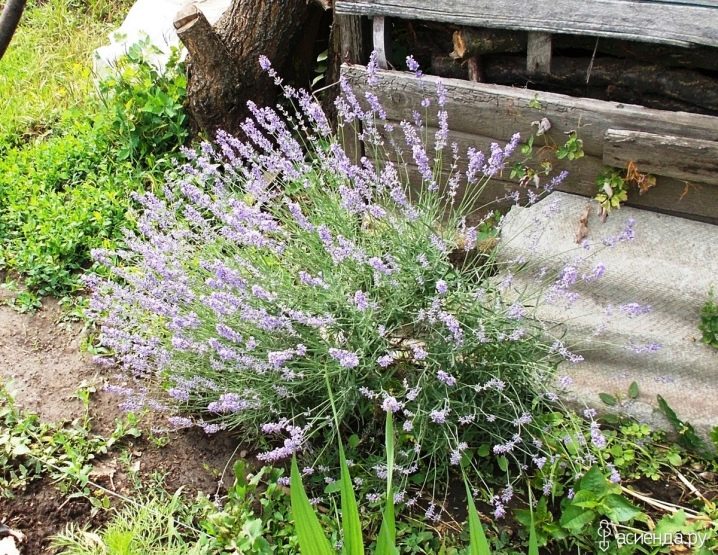
Lavender easily tolerates drought, so even in a sunny place, it will wait for precipitation. But in the conditions of a too dry summer, you can water it three times per season. This rule, of course, does not work when the bushes are only planted in the ground. They will need more frequent watering while they take root - once a week.
In any area, lavender should be placed so that groundwater does not run close to the surface of the earth. Lavender roots in such conditions can simply rot. In addition, the plant needs to provide high-quality drainage so that moisture does not stagnate in the soil.
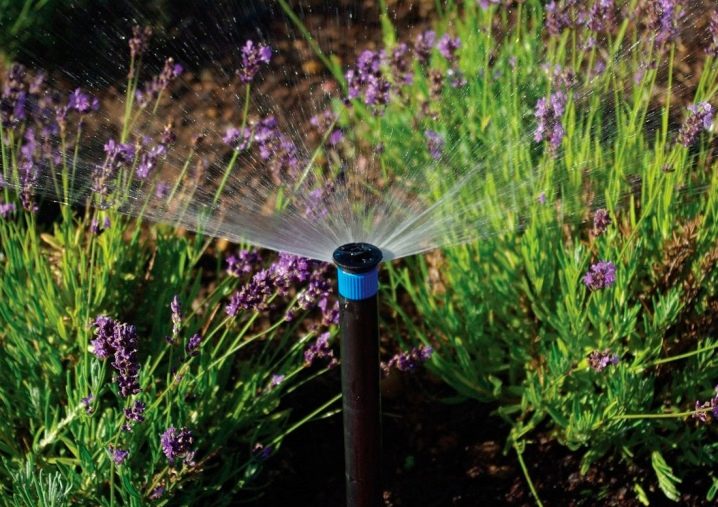
How to plant in a shady area?
It is better, of course, not to plant lavender in the shade, but to look for a planting site in the country or in the garden, where the sun is present at least part of the day. Without it, the plant will not be able to exist and, most likely, will die. In addition, you should not wait for a long flowering, or maybe there will be no flowers at all. Then the lavender will look like a regular green bush.
For this reason, even in a shaded area, you need to look for opportunities to search for at least a relatively sunny area. To do this, you need to follow some rules:
-
do not plant lavender near high fences and large buildings, which always provide extensive shade;
-
avoid planting near powerful trees, it will be uncomfortable for lavender to exist in their shade;
-
do not place in flower beds where there are many plants that can shade lavender and take away sunlight from it.
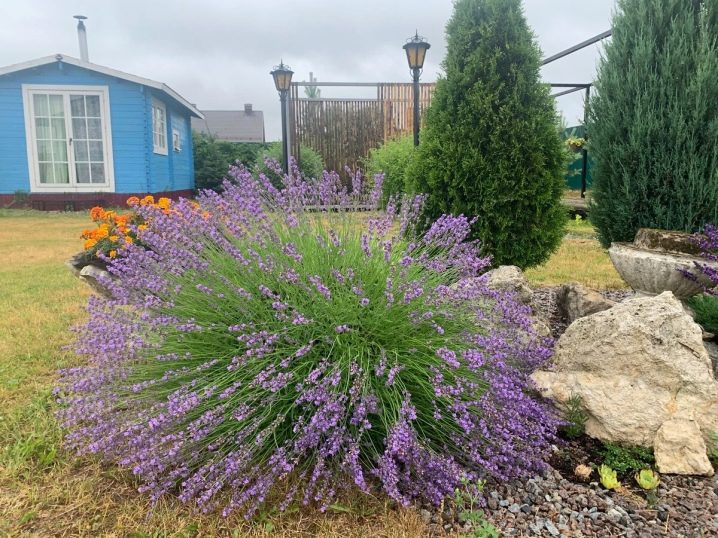
But even on a site where there are many buildings, trees, and the shadow is constantly present, you can find a way out.For lavender, you can create an artificial hill in the form of a slide, and plant bushes there, on the slopes, you can place other plants for which the presence of the sun is not so important.
Another option is to build a high flower bed. You can build it from stones using cement mortar. Place drainage on the bottom, for example, old broken bricks and the same stones, then place light soil. It will be beautiful, and lavender will be good in such conditions.
Another option is to look for special varieties that are more resistant to shading and better adapted to such conditions than their sun-loving counterparts. These include, for example, the varieties "Lilac fog", "Voznesenskaya", "Narrow-leaved".
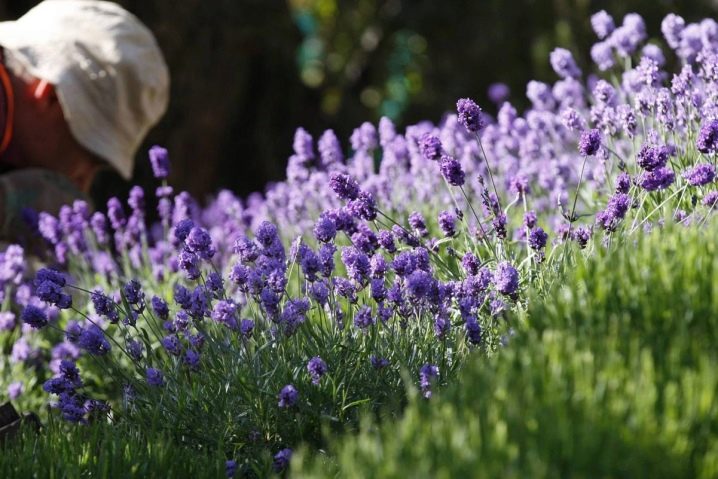
When planting lavender, you need to decide for what purpose the plant is placed. Will it act as a curb, or will it be a small field of lavender. Is it to become a decoration for a common flower bed, or is it planned to create a composition of stones and different varieties of lavender.
If your garden does not have sunny areas for lavender, another method can be used. For example, grow lavender in pots. It can grow at home on sunny windowsills, in the summer it can be taken out into the garden and at the same time placed in any areas where there is sunlight. You won't need a lot of space for this, and the garden will become cozier and more beautiful thanks to this delicate, delicately smelling plant.
And in the garden itself, you can grow these flowers in tall flowerpots, which will also allow them to get the right amount of light.
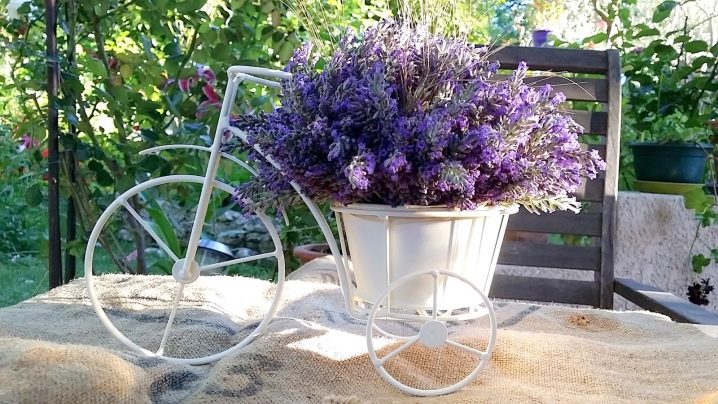
Neighborhood with other plants
When planting lavender in certain areas, it is necessary to take into account the peculiarities of lavender itself, and those plants that are planned to be placed nearby.
For example, you should not plant taller shrubs next to lavender. They will take away the sun's rays that lavender needs so much.
In addition, moisture-loving plantings will also be a burden to lavender. After all, she does not need abundant watering. And keeping those specimens that need water in a drought is also wrong. Therefore, all this should be taken into account. Although lavender itself is a useful neighbor for many cultures.
She is quite capable of protecting her neighbors from pests, since her aroma does not suit everyone and scares away unnecessary guests.
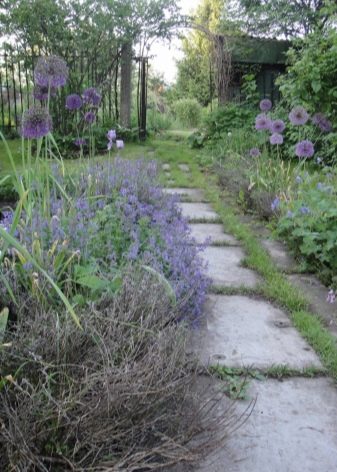
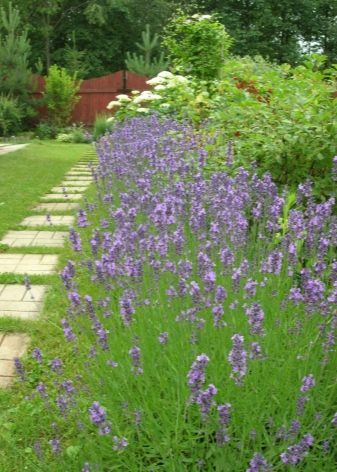
If you plan to make a general composition, an alpine slide or a flower bed, it is worth considering that lavender looks good with many plants:
-
junipers different varieties (again, it is worth choosing creeping options that will be a good addition, but will not block the light of the flowers with their voluminous crown);
-
various herbs, which include mint, thyme, sage, yarrow (you get a very useful and at the same time beautiful flower bed);
-
lavender looks very good with roses, you should not plant them too close, but in general the composition will turn out impressive (as for roses, you also need to take into account that adult roses tolerate drought well, but there are moisture-loving varieties);
-
will not interfere with flowers and planted nearby dill, thyme, rosemary, basil, oregano;
-
good cohabitation is promised and daffodils, lilies of the valley, echinacea, dahlias.
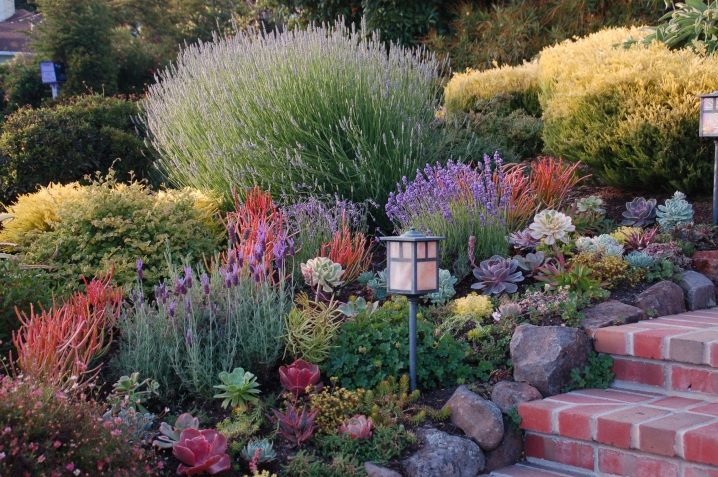
But at the same time, there are plants, the neighborhood of which will not benefit either lavender or themselves. These include fruit trees and shrubs. Companions such as plums, cherries, blackberries, raspberries, gooseberries, and currants are especially unfavorable.
Considering all these nuances, it is not so difficult to grow these cute, delicate flowers with a delicate aroma on your site.
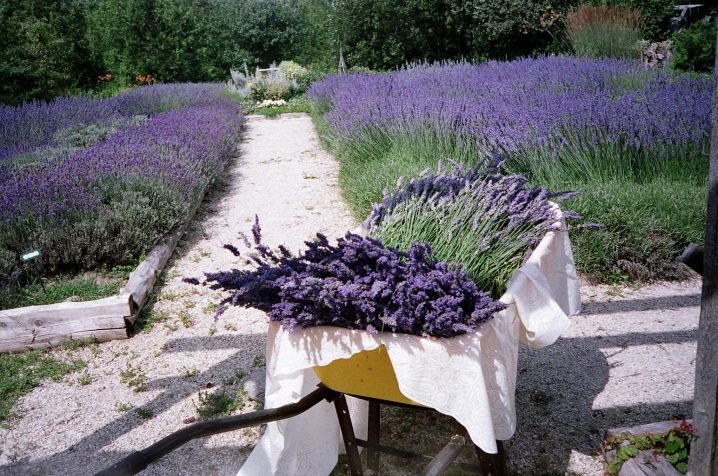







































































































The comment was sent successfully.